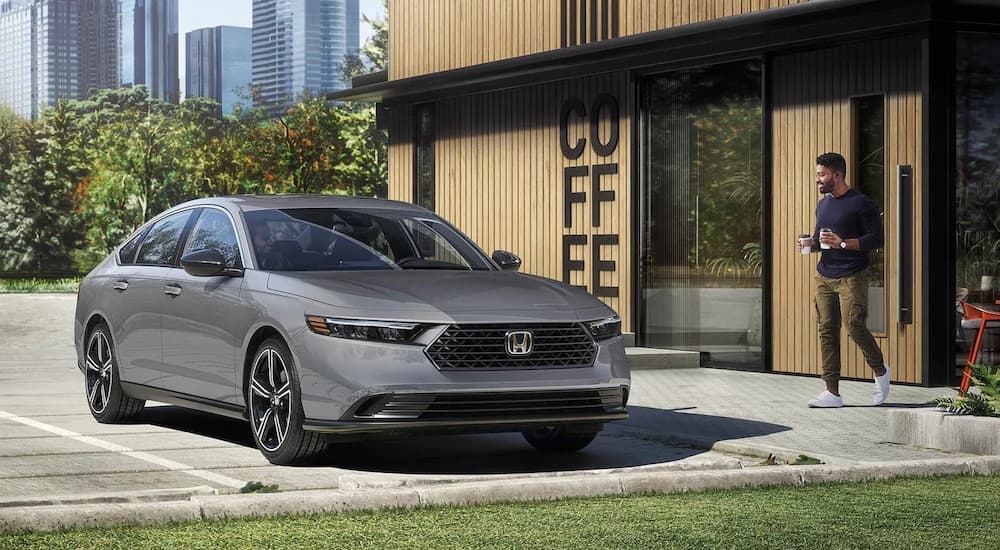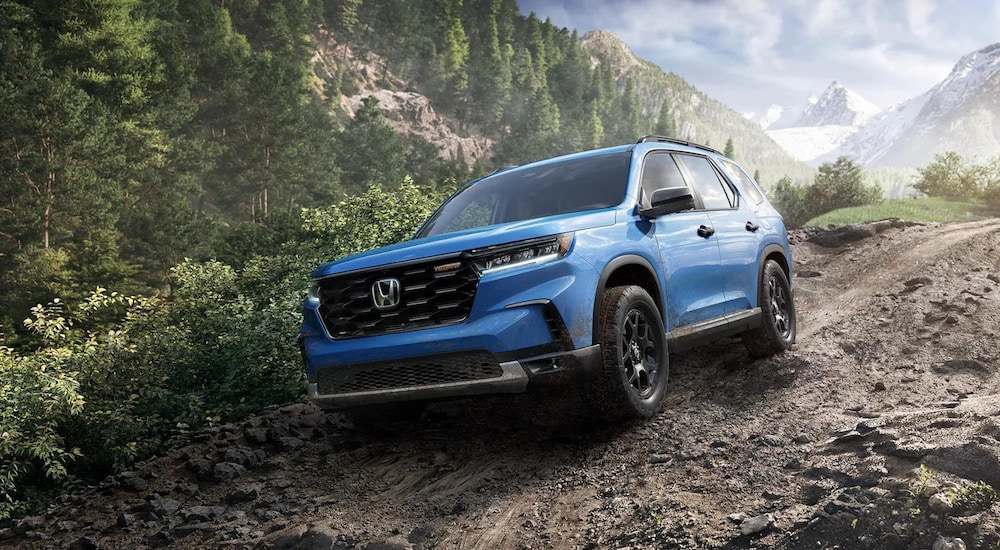Crosby, Stills, Nash & Young once sang, “You, who are on the road, must have a code you try to live by.” This is certainly the case with businesses, especially those in the automotive industry. Corporate philosophy is often a key to business planning, and the executives in the C-suite gather to come up with mission and vision statements meant to guide the organization into the future.
These are not just platitudes meant to make the executives and managers feel good about the company that employs them; these principles are the philosophy of the entire organization. The Honda brand has always fostered this commitment to mission and vision. It even filters down to the design team, which comes up with the new models and the next generations of existing models that you see at your local Honda dealer.
Honda’s design philosophy has a direct impact on you, the driver. It influences the vehicle you drive, the comfort you and your passengers enjoy, and the safety features you rely on. As with any philosophy, it comes down to actually implementing it; it is not enough to just write the statements, have a little party, and put the paper in a drawer. The design philosophy must be put into action at every level of the organization.
Honda’s Corporate Philosophy
Like most companies, Honda has always had a very strong company philosophy. It is basically broken up into two core beliefs. The first is “Respect for the Individual,” while the second is “The Three Joys.” As you will see, these two beliefs have had a major impact on Honda as a company…
Respect for the Individual has three parts: initiative, equality, and trust. Honda understands that the company is only as good as its employees; these dedicated men and women are the core of the business. They are the engineers who do the R&D to improve the Honda lineup. They are the technicians who add these innovations to existing models like the Civic and CR-V while developing new ones like the battery-electric Prologue. They are also the dedicated workers who build the Honda models like the Pilot and Accord with an attention to detail so that your vehicle will be of the highest quality, giving you years of dependable and reliable service. This is why Hondas are known to hold their value better than many comparable models from other brands.
The Three Joys is also broken up into three parts. It starts with the Joy of Buying, which signals that Honda always puts the customer first; the folks at Honda understand that you have chosen one of their vehicles from so many others, placing your trust and your hard-earned pay into a Honda model. The second is the Joy of Selling—the relationship that develops between your authorized Honda dealership and you; it is a dedication to customer service that is second to none. The final one is the Joy of Creating; these are the people in all aspects of the design, development, and manufacturing of Honda’s vehicles, and they know that bringing their joy into each product helps the dealer and customer achieve their own enjoyment as well.
Honda’s Design Philosophy
Just a few years ago, Honda announced a new design philosophy titled Simplicity and “Something,” which has guided the development of all new Honda models, as well as new generations, upgrades, and incremental improvements on existing ones like the Accord and Passport.
As Johnathan Norman, the Creative Lead for Honda Interior Design in the US, explains, “Simplicity in design requires not only a strong philosophy but a discipline toward the user experience.” In other words, Honda has decided to emphasize the user experience or UX, a marketing concept borrowed from technology. Many mobile game apps are structured around maximizing UX. The idea is the same with simplicity in design.
The second part of the design philosophy is “and something.” This means that each of Honda’s models will have its own unique style and personality. For example, you can see that with the Honda Ridgeline, a midsize pickup truck that stands out from the crowd with an aerodynamic look that differentiates it from its competitors. Similarly, the Civic has been given its own specialized styling, with two sedan models and a pair of hatchbacks.
The current design philosophy builds on the Respect for the Individual by empowering the designers at Honda to work on their respective vehicles in a unique way. It also shows the Three Joys philosophy at work as well. The key is to design and build models that will lead Honda’s customers to experience the Joy of Buying no matter which one they choose.
How This Philosophy Impacts Your Vehicle
The simplicity and “something” concept also builds on an older design philosophy: the Man Maximum/Machine Minimum approach was all about maximizing cabin space by making sure that electrical and mechanical parts took up as little space as possible on a vehicle.
This is not surprising. If you look at the history of Honda, the company started out by making motorcycles; these require the designer to make a small engine as powerful as possible while paying careful attention to vehicle weight. It can also be seen in the fact that Honda’s first successful car in America was the Civic; this compact sedan consists of a small but powerful engine, a surprising amount of passenger space that can seat up to five adults, and an attention to technological innovation.
You can even see this philosophy come into play on other Honda models. Both the HR-V subcompact SUV and CR-V compact SUV have an incredible amount of cargo space. The roomy 24.4-cu.ft. trunk on the HR-V opens up to an amazing 55.1 cu.ft. of space by simply folding down the rear row of seats. The CR-V goes even further, with its 39.3-cu.ft. trunk providing 76.5 cu.ft. for cargo when folding down the rear seats; this is the type of cargo space you usually find on larger vehicles.
Honda also offers two different three-row models: the Pilot midsize SUV and the Odyssey minivan. Each one has a spacious interior that can seat up to eight passengers, depending on the seating configuration you choose. Not only will everyone have plenty of space, but Honda also makes riding in these models more enjoyable by adding little details like USB charging ports and cup holders so you and your passengers can enjoy your favorite beverages.
These models have also been designed to make the most out of technological innovation. The Honda Sensing suite of standard and available active driver assistance technologies will help you better avoid getting into an accident when driving a Honda model. Meanwhile, the Honda Audio infotainment system will help you stay connected and entertained; simply pair your smartphone to the system using Apple CarPlay or Android Auto, and you can make hands-free calls and texts while streaming your favorite music apps.
Finally, the technological side of Honda’s design philosophy can be seen in the growing number of EVs offered by the brand. You can already buy an Accord or CR-V as a hybrid, reducing your fuel consumption and greenhouse gas emissions. You can also avoid using gasoline altogether with the all-new 2024 Prologue; this is Honda’s first BEV model, giving you strictly battery power in a style you are sure to love. This is another case of form meeting function, which is a key part of the simplicity and “something” design philosophy.
Bring Simplicity to Your Own Automotive Philosophy
Honda shows how creating a philosophy and putting it into action is vital for an automaker. The company’s fundamental corporate vision has been captured in the simplicity and “something” design philosophy. You can see for yourself how Honda has been able to translate these concepts into vehicles that are like no other available; head to your local Honda dealer today and see how these vehicles can give you a “code that you can live by.”






